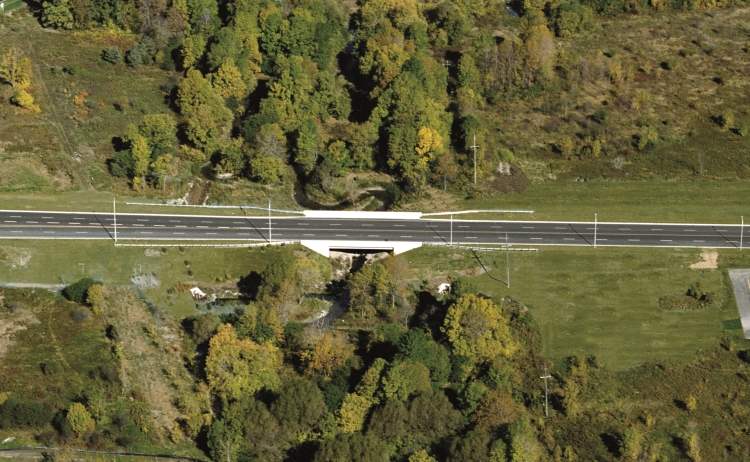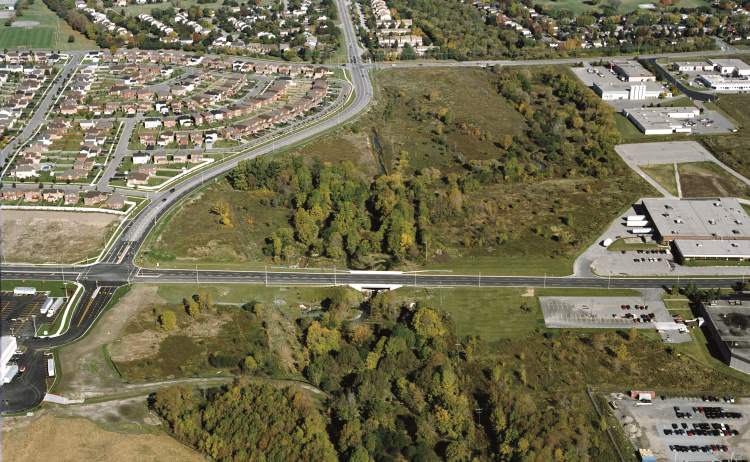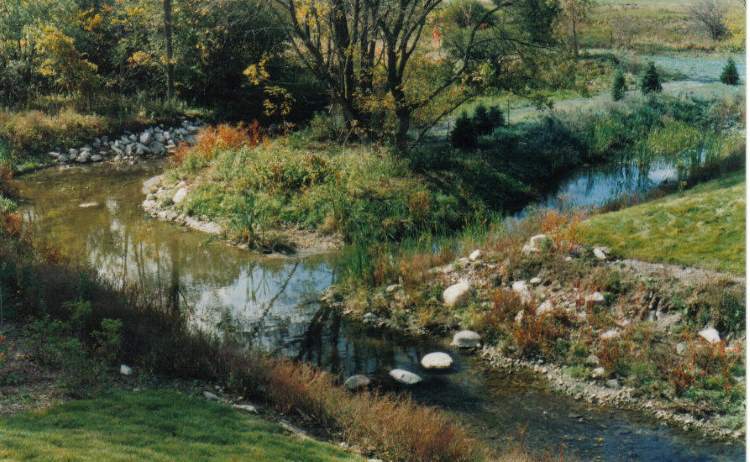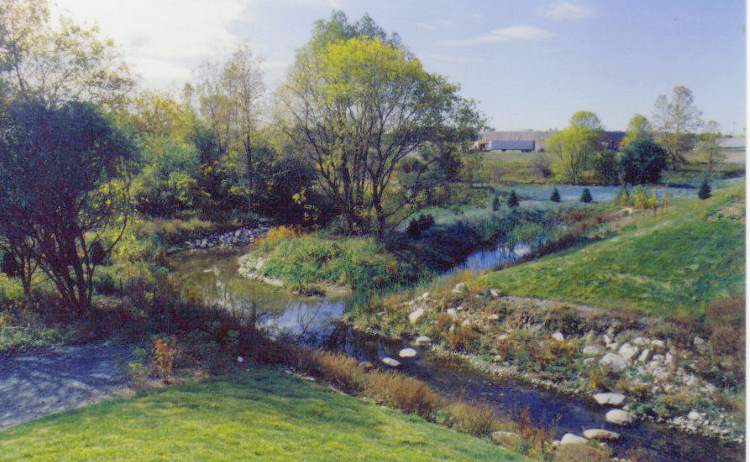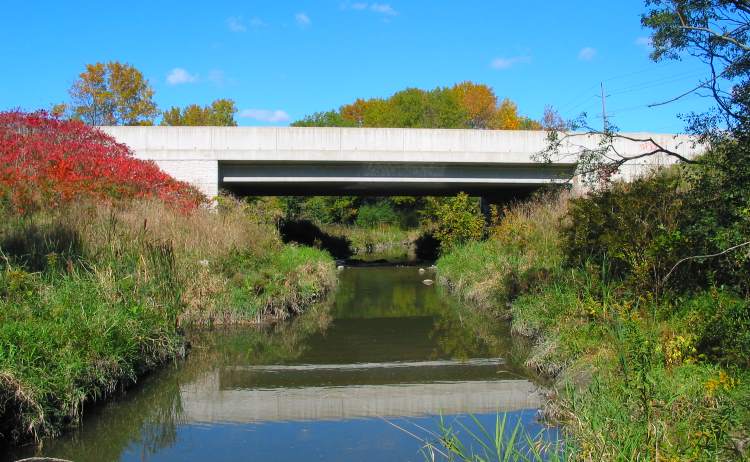TRANSPORTATION > Roads & Highways
Consumers Drive Extension over Pringle Creek
Client: Region of Durham
Location: Town of Whitby
Construction Value: $4,000,000
Services: Environmental Assessment, Public Consultation, Design and Assistance During Construction
Key Features
- Construction of a 4-lane “missing link” section across the Pringle Creek valley
- A new single span bridge structure with aesthetic facing on the abutment wing walls
- Bridge was built on a piled foundation due to the poor soil conditions at the site
- Major creek realignment using “Natural Channel Design”, extensive valley restoration scheme and a HADD fisheries compensation agreement with DFO
Based on the established regulatory floodlines for this reach of Pringle Creek, CFA worked closely with CLOCA and MNR and local property owners, to develop a cost-effective solution for the bridge structure saving the Region an estimated $170,000. This was achieved through the detailed hydraulic analyses using the existing HEC RAS hydraulic model whereby the bridge span was optimized from the “No Impact” condition (requiring a 25m span), down to an acceptable 17m span that resulted in a manageable upstream backwater effect that was acceptable to CLOCA, MNR and the local property owners. CFA then prepared an Agreement for sign-off by each property owner affected that was used to secure the approvals/permits from the Regulatory Agencies.
The new bridge is a 4-lane wide, concrete girder structure with integral abutments that spans the Pringle Creek. The structure incorporated an aesthetic facing on the abutment wing walls and was built on a piled foundation due to the poor soil conditions at the site.
The project involved a major creek realignment using “Natural Channel Design”, extensive valley restoration scheme and a HADD fisheries compensation agreement with DFO.
Natural features incorporated included rock vortex weirs and vortex boulders, root wads, live fascines and live crib walls, vegetated rip rap and rounded riverstone.
The project included roadworks, illumination and signalization, storm sewers and outfalls with sizes up to 1350mm diameter and a 300mm watermain.
Public participation workshops and consultation were held throughout the project.

